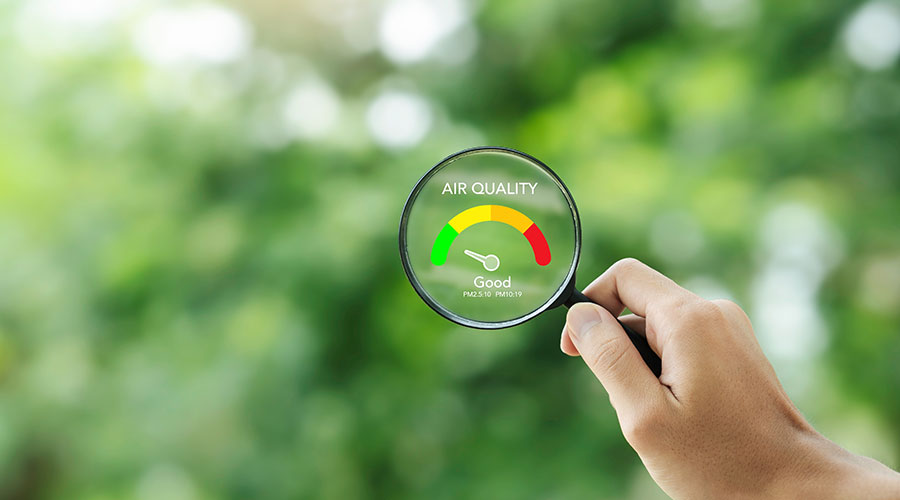IAQ Management: Dilution, Filtration, Separation
The average American spends 90 percent of his or her time indoors, according to the U.S. Environmental Protection Agency (EPA). This startling statistic, coupled with horror stories about sick-building syndrome, make indoor air quality (IAQ) a primary concern for maintenance and engineering managers, as well as building occupants.
Poor IAQ indicates the presence of pollutants arising from a variety of factors, including cigarette smoke, radon, mold and volatile organic compounds (VOC). The concentration of pollutants in indoor air is often two-five times higher than in outdoor air, according to the EPA.
Two factors dictate IAQ: the quality and effectiveness of a building’s HVAC system, and pollutants brought into the building.
Off-gassing, or the release of VOCs from materials such as fabric and adhesives, is a common means of pollutant introduction. The common smells of new carpet and fresh paint signify more than the presence of new products. They are red flags announcing the presence of VOCs.
IAQ drastically can affect occupant health. Sick-building syndrome causes employees to miss work due to illnesses, such as headaches, fatigue, and the common cold. Offices traditionally are considered safe, and many workplace dangers are not a concern for workers. But sickness-causing air pollutants are widespread, even in seemingly clean office buildings.
IAQ Tactics
How can managers apply their knowledge of IAQ pollutants to help clear the air in buildings? An effective IAQ management plan can help control most asthma-causing pollutants.
Every manager should develop and implement an IAQ management plan that includes several customized goals and methods for controlling indoor pollutants. Three comprehensive methods include dilution, filtration and separation.
Managers can implement two methods to dilute indoor air or reduce the percentage of pollutant-laden air as compared to clean air.
The first method is to make sure the HVAC system brings in the proper amount of fresh outdoor air. Design engineers use ASHRAE Standard 62.1-2004 to calculate the exact amount of outside air a system should provide. This standard attempts to balance the cost of conditioning outside air with the amount needed to properly dilute pollutants.
ASHRAE 62.1-2004 provides metrics for outdoor air based on cubic feet per minute (cfm) per person and cfm per square foot, depending on the space. For example, a regularly occupied office requires a certain cfm per person, as well as a certain cfm per square foot. On the other hand, a non-regularly occupied corridor only requires a certain cfm per square foot.
The second method of diluting indoor-air pollutants involves limiting the amount of pollutants entering a building. Everything placed inside a building affects IAQ.
Managers can focus on the big picture by taking care of the most obvious problems first. Obvious problem items include paints, sealants, carpets, adhesives and composite woods containing added formaldehyde. Look for product certifications, such as Green Label and Green Seal, and become familiar with standards, such as South Coast Air Quality Management District (SCAQMD).
Proper filtration in HVAC return grilles can remove many indoor-air pollutants. Each air filter comes with measurements of its effectiveness. The minimum efficiency reporting value (MERV) rating of an air filter is an important guide. For example, a MERV 13 filter is about 90 percent effective at removing most types of indoor-air pollutants.
The final strategy is to separate cleaning products, high-volume printers, and copy machines containing indoor-air pollutants from occupied areas. To achieve separation, workers should store cleaning chemicals in a room or closet equipped with an exhaust system to prevent fumes from escaping to occupied areas of the building.
Also, the walls of this storage area should be floor to ceiling, or the area should have a hard-lid ceiling to contain fumes. The room or closet also should have a self-closing door to prevent exposure through human error.
These three methods of pollutant control should be the main focus when drafting an IAQ management plan. It also might help to survey building occupants before drafting the plan and ask for individual IAQ concerns. Following implementation, a second survey could assess program results.
Related Topics:














